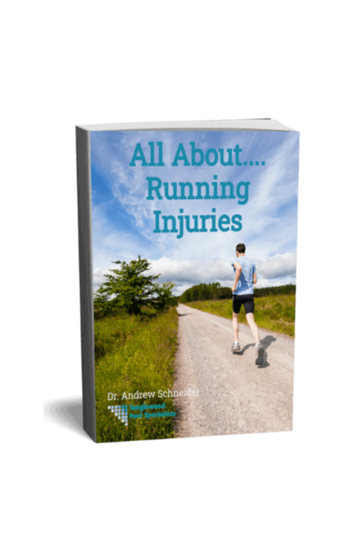
If you’re a frequent runner, chances are you’ve noticed that your toenails are less than pretty. Black, bruised, purple...heck, they may be falling off!
Look, runners get hurt quite often. What's one of the most common injuries?
Runner’s toenail, also called black toe or toenail subungual hematoma, describes an injury that turns your nail black. That color change is a sign that stress has damaged the blood vessels feeding your nail. Once that happens, they may release blood. When it stays, trapped, under the nail, you'll notice the change in color.
Sometimes, that nail won't even hurt. You might be proud of your black, nail, because it shows how hard you train. But bruised runners' toenails can cause complications. These include
- blood blisters (a bump on your skin that's filled with blood)
- infection
- loose nails or nail loss
- black or dark red discoloration
- pain
- pressure under your nail
Signs of an infected runners nail include:
- swelling
- redness
- sharp pain
- pus
- a smelly nail
- fever
Now you know the symptoms and risks of runners' toenail. We're guessing you might not get excited about this so-called badge of honor. So let's take a look at why you develop this condition. And help you keep your nails from changing color when you run.
Why do you Get Runner's Toenail? ![runners toenails are an injury caused by stress]()
As we mentioned earlier, we also call runners' toenail a subungual hematoma. That's just a fancy way of saying you have blood under your nail that's not inside your blood vessels. That blood shows up because of repeated stress. And where does the stress come into the picture? It happens when your toe hits the front of your shoe as you run. It could even happen if your toe just rubs against the shoe edge, since friction can also cause damage. This injury is most common on your big toe since it's the longest (and comes closest to the sneaker edge.)
Of course, if your sneakers are decent, their insides should be soft and cushioned. So one or two hits won't do much damage to your nail. But hit that toenail against your shoe 1000 times? The combined force of impact hurts. It can damage your blood vessels, causing blood to leak under your nail. And the more often you run and slam your toenail, the greater the damage that will set in.
Now, for years, we thought that distance and running terrain, combined with shoe choice, caused your nail to hit the shoe's toe box. But now, a new study suggests that other factors can contribute to black toenails. And these include increased foot temperature, reduced arch height and reduced ball-of-foot width, suggesting that breathable foot gear along with the addition of custom orthotics to your sneakers could help reduce your risk for developing a black toenail.
But what if you don't take precautions? Well, remember this: your nail is a hard covering that’s supposed to protect the delicate skin of your nail bed. If you don’t take care of yourself, lots of blood builds up under your nail, and that spells trouble. Your nail may get pushed up and even detach from your nail matrix.
Sometimes that works well. And you find that a new nail has already grown in once your old nail falls off. But not everyone gets that lucky. If your nail matrix gets damaged, for example, a new nail may never grow in place of the old, damaged one. In that case, you'd be walking around with no toenail to polish. For life. Or, you'd have to seek out a nail-replacement solution.
Don't get scared. This severe level of trauma typically only affects people, like marathon trainees, who log hundreds of miles each week or month. But it can happen with short-distance runners who wear too-tight shoes all the time. So everyone needs to be cautious.
Causes of Black Toenails
Remember, trauma doesn't cause every black toenail. But it is a very common cause, whether it's the repetitive stress of trauma, the result of dropping something heavy on your toe, or a side effect of crushing that toe, as you might if it gets caught in a heavy, closing door.
Certain fungal infections can change the color of your nail. And, as runners, you're more likely to get a fungal toenail since your feet get hot and sweaty in your shoes. Creating the perfect breeding ground for fungal infections.
Some conditions can also affect your nail color, including diabetes and kidney problems. But if you've been training hard and your nail is black, you're likely dealing with a runner's toenail.
Preventing and Treating Runners' Toenail ![Careful training, socks and nail trimming can prevent black toenails for runners]()
You have to watch out for your big toe if you don't want a black nail. Your first step? Buy a shoe that fits. Look for a pair that lets you wiggle your toes, without slipping and sliding. Consider buying shoes specifically designed for running, not for multi-sports or general athletic activities. Some people may benefit from adding a running orthotic to their shoes. And you should all check your lacing form to see if our preferred methods can help.
Trimming your nails short can also help, since it lowers the odds of impact. But don't go too short, since that can increase your risk for ingrown toenails.
You also need to be smart about training. If you're upping your mileage, do so with caution. My standard recommendation is a 10 percent weekly mileage increase to avoid injury.
Checking your socks is also crucial. Choose sweat-wicking pairs to prevent fungal infections. And look for cushioned pairs that protect your nail from impact. (But make sure they don't impact your sneaker fit, since that could lead to blisters from rubbing.) Still, the best socks in the world won't protect you if you don't change out of them right after a long walk or run. Because, after all that stress, staying a wet and slippery sock at home could increase your black toenail risk after the training is over!
Here's my final thought: stop running if you notice that your toes hurt. During your break, pay very careful attention to the fit of your sneakers. Especially in the toe box, as this will help determine if you're headed for a black toenail.
Of course, toenail trauma is part of a serious runner’s life. I get that. But I also know that running hurts when you lose your toenail. So, if you want to keep training, and hold onto your remaining nails, get smart. Stop training through the pain. And come see me, your Houston running doctor as soon as you notice discomfort in your nails.






















